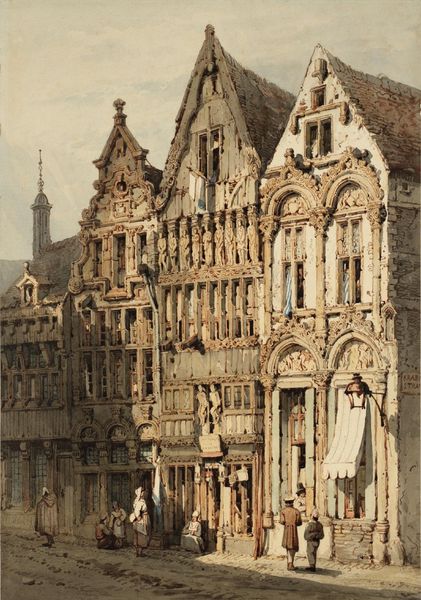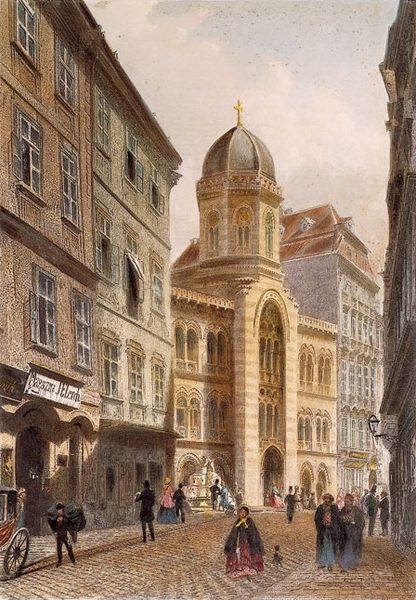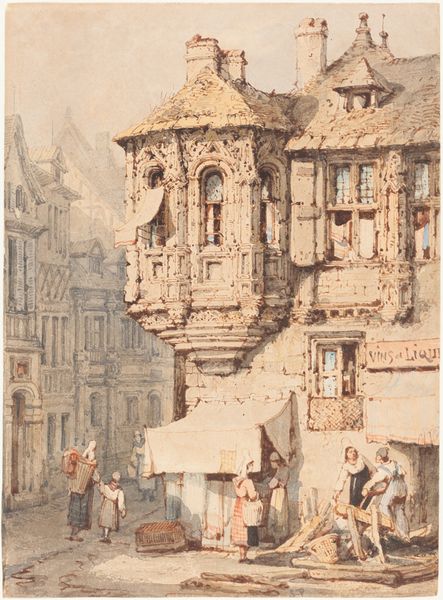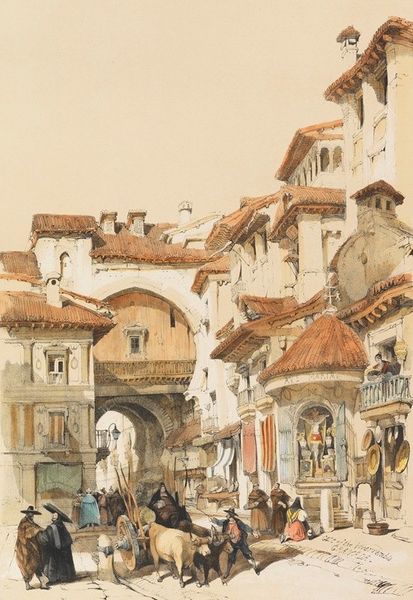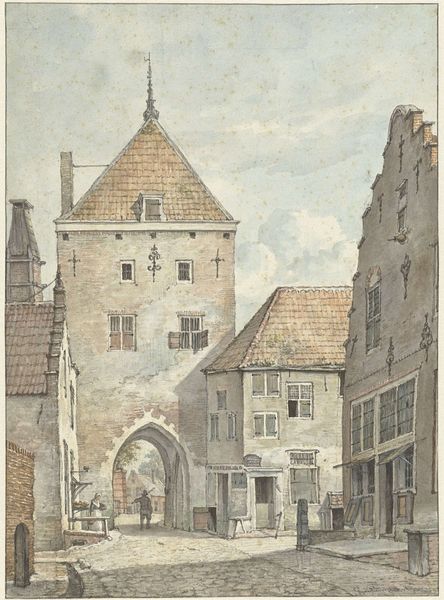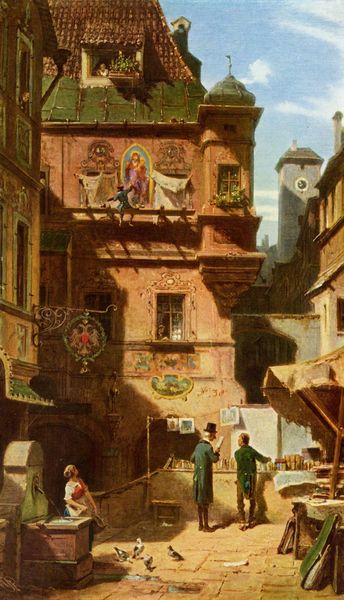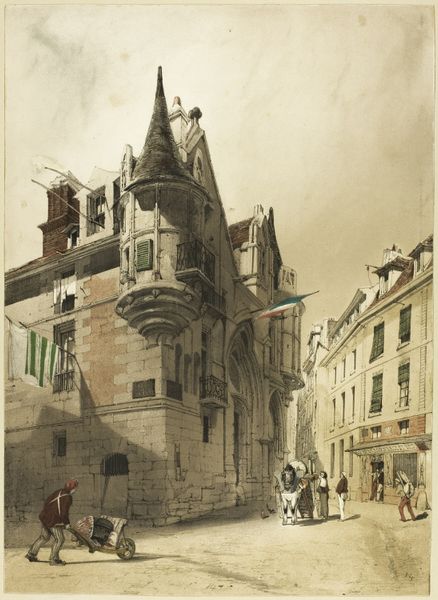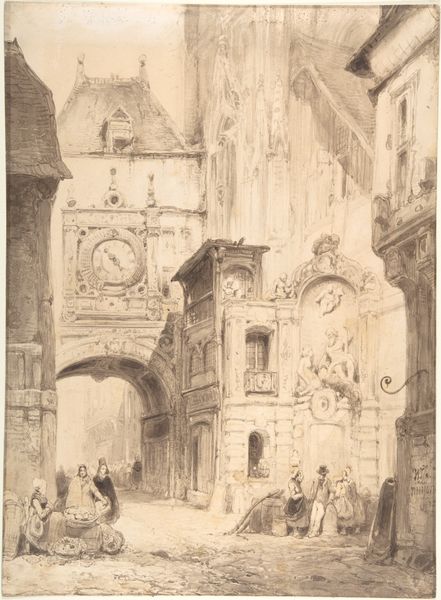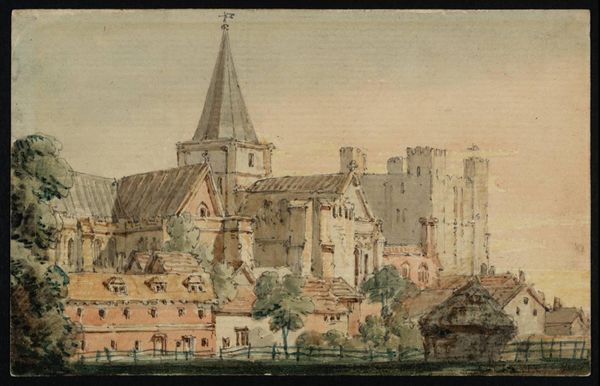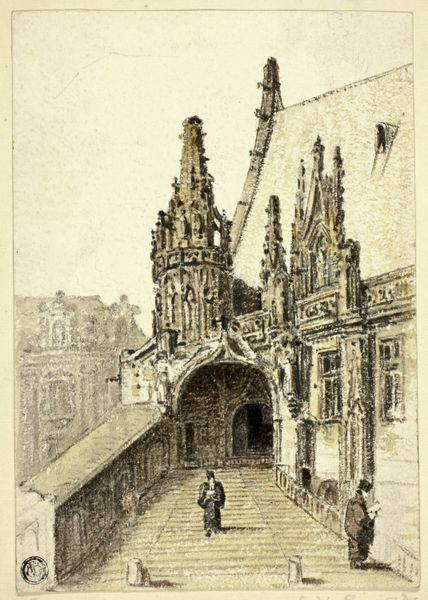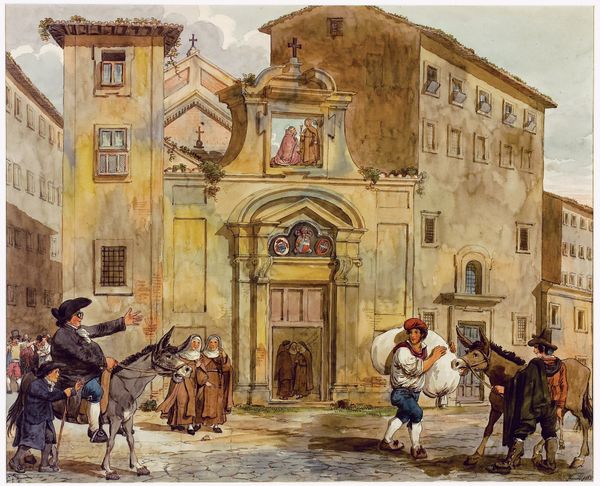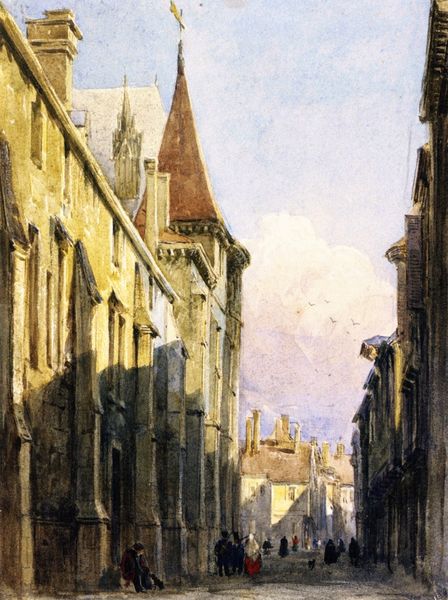
painting, plein-air, watercolor, architecture
#
urban landscape
#
painting
#
plein-air
#
landscape
#
urban cityscape
#
traditional architecture
#
watercolor
#
cityscape
#
genre-painting
#
academic-art
#
street
#
watercolor
#
architecture
#
historical building
#
building
Copyright: Public domain
Curator: I’m struck by the precision and light in Rudolf von Alt's 1871 watercolor, "Watercolour of Steyr Bummerlhaus." The details are incredible. What's your initial take? Editor: It feels surprisingly bustling and cramped. You have all these different scales represented. Wealth in architecture. Poverty in labour. It's a potent contrast within such a diminutive, detailed piece. Curator: Yes, he’s capturing a moment, a whole atmosphere in this seemingly still watercolor. The building itself, the Bummerlhaus, practically exudes the cultural memory of Steyr. The symbols in the architecture almost whisper its history, if you look carefully. Editor: It certainly centers the established power and visual wealth inherent in institutions. But I’m also drawn to those everyday figures—those whose labor props it all up, literally in the street, making this moment of "high" culture possible. The dogs add to the chaos, mirroring the social tensions, I think. Curator: That’s a great point; these genre elements absolutely contribute meaning. It speaks to how von Alt situates himself—observing this specific convergence of culture and everyday life, imbuing a sacred aura even on secular structures like this architectural treasure. The Bummerlhaus in particular has deep resonances. It is not merely a building. Editor: Exactly! I’m interested in who gets left outside that supposed "sacred aura.” Are the laboring people of Steyr equally considered? The composition pushes their figures towards the periphery, literally grounded and small against the splendor of the building. Curator: But doesn't that framing reinforce its iconic power and value in Steyr's communal psyche? It's like enshrining its enduring position, cementing it as a cultural cornerstone through pictorial emphasis. Editor: Perhaps, but at what cost? By idealizing these historic power structures, are we obscuring the lived realities and labor on which it all rested? Curator: Food for thought. The layers of meaning truly reverberate across history! Editor: Precisely. Even pretty buildings exist within very particular power dynamics. It gives us a window onto a social ecosystem from centuries ago.
Comments
No comments
Be the first to comment and join the conversation on the ultimate creative platform.
